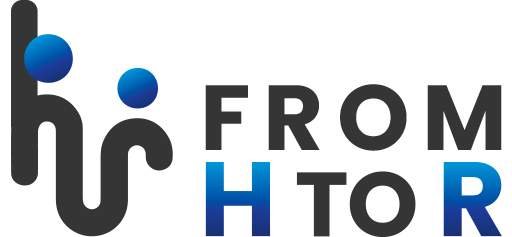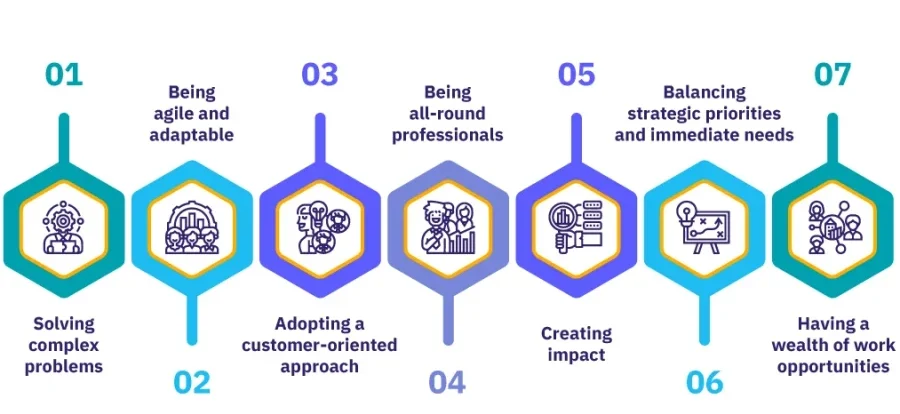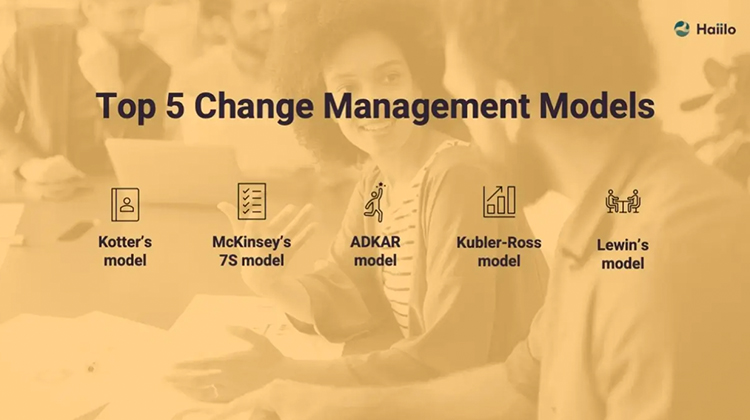Our Library From H to R
- Health and safety: This involves the implementation of policies and practices to promote the health and safety of employees within an organization.
- Hiring: This involves the process of recruiting and selecting candidates for open positions within an organization.
- HR analytics: This involves the use of data and analytics to inform HR decision-making and strategy.
- HR strategy: This refers to the overall plan and direction for the HR function within an organization.
- HR technology (HRMS): This covers the use of technology to support HR functions, such as information systems used to streamline HR processes and improve efficiency.
- Human capital Investment: This refers to the investments that organizations make in their employees in order to improve their skills, knowledge, and abilities, increase the value and productivity of the organization’s workforce, and to enable employees to contribute more effectively to the organization’s goals and objectives.
- Human resources functions: This refers to the tasks and responsibilities of the HR department within an organization, including topics such as employee relations, talent management, recruitment, etc..
- Innovation and creativity: This refers to the process of generating and implementing new ideas and approaches.
- Job analysis: This involves the process of evaluating and analyzing the requirements and responsibilities of a job in order to determine the necessary skills and qualifications.
- Job descriptions development: This refers to the process of creating a detailed and accurate description of a specific job in a document that outlines the duties, responsibilities, and requirements of a specific job within an organization.
- Job evaluation: This involves the process of determining the relative worth of different jobs within an organization in order to establish a fair compensation structure.
- Leadership: This refers to the ability to inspire and guide others towards a common goal.
- Leadership and management: This covers topics related to leading and managing people within an organization, including topics such as team building, communication, and motivation.
- Leadership development: This involves providing leaders with the skills and knowledge needed to effectively lead and manage others.
- Learning and development: This refers to the various programs and initiatives used to help employees develop new skills and knowledge.
- Management: This involves the process of planning, organizing, and directing the activities of an organization
- Marketing and branding: This involves the strategies and tactics used to promote products or services and build brand awareness, including advertising, public relations, and social media marketing.
- Mentoring: this refers to a long-term relationship in which a mentor provides guidance, support, and advice to a mentee.
- Motivation: This refers to the factors that influence an employee’s behavior and willingness to perform.
- Onboarding: This refers to the process of introducing new employees to an organization and helping them become acclimated to their new roles.
- Organizational design: This involves the structure and arrangement of an organization, including topics such as departmentalization, span of control, and decision-making processes.
- Organizational development: This involves implementing changes and improvements to an organization’s structure and processes in order to improve efficiency and effectiveness.
- Performance appraisal: This involves evaluating an employee’s job performance and providing feedback on areas of strength and areas for improvement.
- Performance improvement: This involves identifying and addressing areas of weakness in an employee’s performance in order to improve overall job performance.
- Performance management: This involves the process of setting performance goals and objectives for employees, and tracking and evaluating their progress towards those goals.
- Personnel management: This refers to the functions and responsibilities of the HR department within an organization, including topics such as employee relations, talent management, and compliance.
- Pricing: This refers to the process of determining the cost of a product or service.
- Project management: This involves the planning, execution, and control of projects within an organization, including topics such as project scope, budget, and risk management.
- Quality Management System (QMS): This involves a set of processes and procedures that are designed to ensure that the organization’s products or services meet certain standards of quality and are consistently delivered to customers.
- Recruiting: This involves the process of attracting and identifying qualified candidates for open positions within an organization.
- Relationships: This refers to the interactions and connections between people, including topics such as communication, trust, and collaboration.
- Resources optimization: This refers to the process of maximizing the efficiency and effectiveness of the resources that an organization has available. This can include physical resources such as materials and equipment, as well as intangible resources such as time, knowledge, and expertise.
Our Library From R to H
- Recruiting: This involves the process of attracting and identifying qualified candidates for open positions within an organization.
- Relationships: This refers to the interactions and connections between people, including topics such as communication, trust, and collaboration.
- Resources optimization: This refers to the process of maximizing the efficiency and effectiveness of the resources that an organization has available. This can include physical resources such as materials and equipment, as well as intangible resources such as time, knowledge, and expertise.
- Sales: This refers to the process of promoting and selling products or services to customers.
- Strategic planning: This involves the process of setting long-term goals and objectives for an organization, and developing a plan to achieve them.
- Succession planning: This involves identifying and developing potential successors for key leadership roles within an organization.
- Supply chain management: This involves the management of the flow of goods and services within an organization, including topics such as sourcing, logistics, and inventory management.
- Sustainability and corporate social responsibility: This refers to the integration of social and environmental considerations into business practices, including topics such as environmental sustainability, ethical sourcing, and community engagement.
- Talent acquisition: This involves the process of identifying qualified candidates, attracting and head hunting for open positions within an organization.
- Talent management: This involves the processes and strategies used to attract, retain, and develop talented employees within an organization. It includes topics such as recruitment, training and development, performance management, and employee engagement.
- Team building: This involves strategies and activities designed to improve team cohesion and performance, help team members develop the skills and knowledge needed to work together effectively.
- Team bonding: This involves activities focused on building relationships and improving social connections within the team.
- Training: This involves providing employees with the skills and knowledge needed to perform their jobs effectively.
- Workforce planning: This involves forecasting an organization’s future workforce needs and developing strategies to meet those needs.
- Workplace culture and ethics: This refers to the values, norms, and behaviors that define an organization’s working environment.
- Workplace safety: This involves implementing policies and practices to promote the health and safety of employees within an organization.
- Workplace wellness: This refers to initiatives and programs designed to promote the overall health and well-being of employees.
- Youth empowerment: This refers to the process of giving young people the skills, knowledge, and resources they need to make positive changes in their own lives and in their communities.
- Active Listening: This involves the ability to effectively communicate with others, using verbal and nonverbal cues to show engagement and interest.
- Assessment and evaluation: This refers to the process of measuring and evaluating the effectiveness of various programs, initiatives, objectives or processes within an organization.
- Body language: This concept refers to the nonverbal cues that people use to communicate with one another, such as gestures, posture, and facial expressions. These cues can convey a range of emotions and intentions, and can be an important aspect of communication.
- Bookkeeping: This refers to the process of recording, classifying, and summarizing financial transactions in order to provide information about an organization’s financial position.
- Brainstorming: This is a problem-solving technique that involves generating a large number of ideas or solutions to a problem or challenge. It is designed to stimulate creativity and encourage the free flow of ideas, and is often used to generate new ideas, solve problems, or identify potential opportunities.
- Budgeting: This refers to the process of planning and managing the financial resources. It involves setting financial goals, identifying income and expenses, and creating a plan to allocate money towards those goals.
- Business planning: This is the process of defining the goals and objectives of a business, and creating a plan to achieve those goals. It involves analyzing the current state of the business, identifying opportunities and challenges, and developing strategies and actions to achieve the desired outcomes.
- Career development: This involves helping employees plan and pursue their professional development.
- Change management: This refers to the process of implementing change within an organization, including topics such as communication, engagement, and resistance to change.
- Coaching: This is a structured, goal-oriented process in which a coach helps an individual to develop specific skills or achieve specific goals.
- Compensation and benefits: This covers the various forms of compensation and benefits offered to employees, including salary, bonuses, and benefits such as health insurance and retirement plans.
- Conflict resolution: This involves the strategies and techniques used to manage and resolve conflicts and disputes between individuals or groups in a way that is satisfactory to all parties involved.
- Employee development: This involves helping employees develop new skills and knowledge to advance their careers within an organization.
- Employee engagement: This refers to the level of commitment and involvement employees have in their work and the organization.
- Employee relations: This refers to the interactions and communication between employees and the organization, including topics such as conflict resolution, workplace culture, and employee engagement.
- Employee retention: This involves strategies and practices used to retain talented employees within an organization.
- Employment law: This covers the legal issues related to employment, including topics such as discrimination, harassment, and labor laws.
- Engineering a salary scale, or pay scale: This refers to the process of designing and implementing a structured system for determining the salaries or wages of employees within an organization.
- Entrepreneurship and small business management: This covers topics related to starting and running a small business, including business planning, financing, marketing, and operations.
- Finance and accounting: This involves the management of financial resources within an organization, including topics such as budgeting, financial reporting, and risk management.
- Health and safety: This involves the implementation of policies and practices to promote the health and safety of employees within an organization.
- Hiring: This involves the process of recruiting and selecting candidates for open positions within an organization.
- HR analytics: This involves the use of data and analytics to inform HR decision-making and strategy.
- HR strategy: This refers to the overall plan and direction for the HR function within an organization.
- HR technology (HRMS): This covers the use of technology to support HR functions, such as information systems used to streamline HR processes and improve efficiency.
- Human capital Investment: This refers to the investments that organizations make in their employees in order to improve their skills, knowledge, and abilities, increase the value and productivity of the organization’s workforce, and to enable employees to contribute more effectively to the organization’s goals and objectives.
- Human resources functions: This refers to the tasks and responsibilities of the HR department within an organization, including topics such as employee relations, talent management, recruitment, etc..





